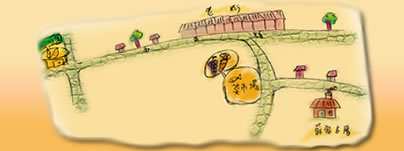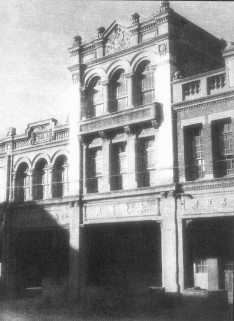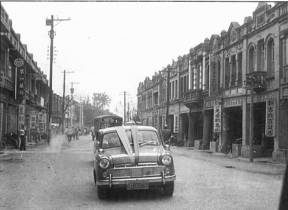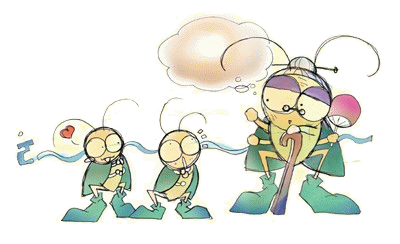The Adventure of Little Crickets
The Beauty of Sinhua country.
|
|
This is just a small street, but once it was the center of life for the people in this region; it used to be called Sin-Hua Ginza . Today, the beautiful architectural relics are a witness of the former prosperity of Tavokan Village. |
|
Bustling San Jiao Yong ZaiSin-hua Village used to be a gathering place for the Siraya Ping-pu Tribe's Tavokan society. Before the Dutch colonized Taiwan , it was an autonomous Ping-pu society, and there were already branch societies of the people. In the Ming Cheng period, the agricultural colony policy establishes military in this village, allowing the troops to farm, and merges the peasants with the troops. In the Qing Dynasty, between Emperors Chien-long and Chia-Ching, Tavokan Street emerges, roughly like the areas around this village and its streets. Under Japanese rule (1920), Tainan State Sin-hua County Town Hall was established, and Sin-hua got its name. Sin-hua County was the County closest to Tainan State Government in Tainan County , and is the entrance into the mountains. With the development of Tainan State , it became very a prosperous and bustling region. It has a broad radial type transport network, is the hub between the plains and the mountains, and is the merchandise storage and supply point for neighboring villages and townships. Baroque-style shop arcade is luxurious and dignified, showing off the current prosperity, filled with merchants and a lively atmosphere. Today, at the cross-roads of Chung-cheng Street and Chung-shan Street , near the West side V this used to be the center of downtown, called San Jiao Yong Zai Thirty-Six Dan. |
|
 |
|||||
Origin of the buildings Under Japanese rule, before Taisho Year 10 (1921), Sin-hua's most popular Shuang-lien Street (now Chung-cheng Street), used to be two rows of low houses, and the street only allowed one oxcart to pass through. The beginning of this street (in the middle of the road) also has a temple, the Mazu Palace (previous version of the current Chao-tien Palace ). In 1920, the Japanese government tore down houses on Sin-hua Street and broadened it, forming today's Chung-Cheng Old Street. |
 The first Baroque-style house. |
||||
In 1937, the Japanese government gave loans of $2,000 per family to the residents on the East-side street to allow them to tear down and build Western-style houses of the same type. When merchant houses on the East side are complete, the street looked astonishingly beautiful and very artistic. It was a symbol of the cultural advance of Sin-hua. At this point, there was no more East or West side separation. Each house on this merchant street is slightly different and unique in its own way. The beautiful houses on the West side are built by the people on their own, and the East side was helped built by the Japanese government. As opposed to the West side, the East side of Old Street has buildings that look simpler, the building faces are not so decorated as the West-side, and there is a clear difference in style. Internal materials are generally juniper V though old, it has not rotted. |

Old Street in 1951 |
||||
Editors: Shang Kuang, Hung Hsiang, Kuan Hao |
|||||
|
|||||
 Past the Prosperity
Past the Prosperity